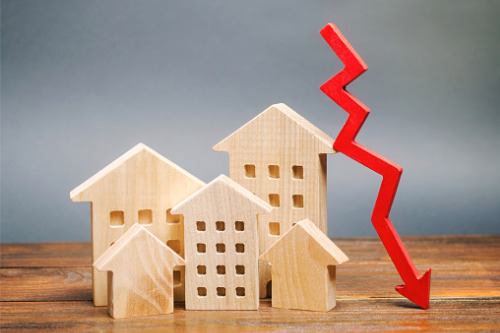Chief economist predicts strong headwinds

With the housing market currently booming, most economists predict property prices to grow between 15% and 20% from the trough in October 2020 through mid-2022. However, one expert is forecasting prices to trend in the opposite direction.
Bob Cunneen, chief economist at MLC, is tipping prices to drop 7% next year as fixed interest costs rise, according to a report by The Australian Financial Review. Cunneen said that while there will be growth of about 9% this year, some of that growth is illusory.
“This is an artificial market of solid gains driven by perceived supply shortages and the tailwind of lower mortgage interest rates,” Cunneen told AFR’s quarterly economist survey. “The longer-term fundamentals of housing affordability, high household debt and lower population growth suggest that house prices will struggle next year. A scenario where the global bond market pushes Australian fixed borrowing rates higher and the RBA starts to raise cash interest rates in mid-2022 is likely to see Australian house prices reverse course with falls of circa -7 per cent next year.”
While most market watchers are predicting continued price rises, there is some evidence for Cunneen’s take. Interest rate futures are pricing in a rate increase of 0.25 percentage points next year, and bond markets are already applying upward pressure on yields, driven by expectations of a return to inflation fuelled by a recovery from the COVID-19 crisis.
Cunneen also said intervention from the Australian Prudential Regulation Authority could stifle house-price growth, AFR reported.
“To keep the housing market in check, APRA’s macroprudential measures in terms of scrutinising lending standards and loan valuation ratios are likely to be only partially effective,” he said. “If annual house gains exceed 10 per cent this year, then APRA should also consider credit growth caps as well as changing risk weights for financial institutions’ capital ratios to slow the price frenzy.”
Read more: Soaring property prices drive household wealth to record level
APRA has so far been cautious about intervening in the market.
“Should risks materialise, we have a range of tools we could employ,” APRA Chairman Wayne Byres told the AFR Banking Summit last week. “The exact tools we choose will depend on the environment we face, and we are giving careful thought to which tools might work best in different scenarios.”
While Cunneen is predicting a price drop, Goldman Sachs economist Andrew Boak is bullish on property values.
“Our base case is that house prices rise around 20% over the next few years, driven by the tailwind from the 100-basis-point reduction in mortgage rates over the past year and a half,” he told AFR. “This assumes migration doesn’t fully normalise until the second half of 2022, so if this assumption proves too conservative then prices could rise by an additional 5% to 10%.”
Meanwhile, ANZ economics head David Plank is more cautious, predicting that APRA will step in this year to put the brakes on the runaway housing market.
“We expect prices to rise 17% through 2021 and 6% through 2022,” Plank told AFR. “We expect APRA to step in with macroprudential measures some time in the second half of 2021.”
There could be some disagreement between APRA and the Reserve Bank of Australia when it comes to cooling the market, however. The RBA wants to see steady house-price growth because it’s an effective way to cut unemployment, Paul Bloxham, former RBA economist and HSBC chief economist, told AFR.
“We expect the RBA will continue to remain relaxed about the housing boom for the moment,” Bloxham said. “Indeed, a key lesson from the housing market correction of 2018 was that housing prices need to be rising to get enough momentum in consumer spending to, in turn, support a lift in inflation. In short, the RBA needs housing prices to rise in order to achieve its inflation mandate.”
 Ryan Smith is currently an executive editor at Key Media, where he started as a journalist in 2013. He has since he worked his way up to managing editor and is now an executive editor. He edits content for several B2B publications across the U.S., Canada, Australia, and New Zealand. He also writes feature content for trade publications for the insurance and mortgage industries.
Ryan Smith is currently an executive editor at Key Media, where he started as a journalist in 2013. He has since he worked his way up to managing editor and is now an executive editor. He edits content for several B2B publications across the U.S., Canada, Australia, and New Zealand. He also writes feature content for trade publications for the insurance and mortgage industries.LinkedIn | Email



